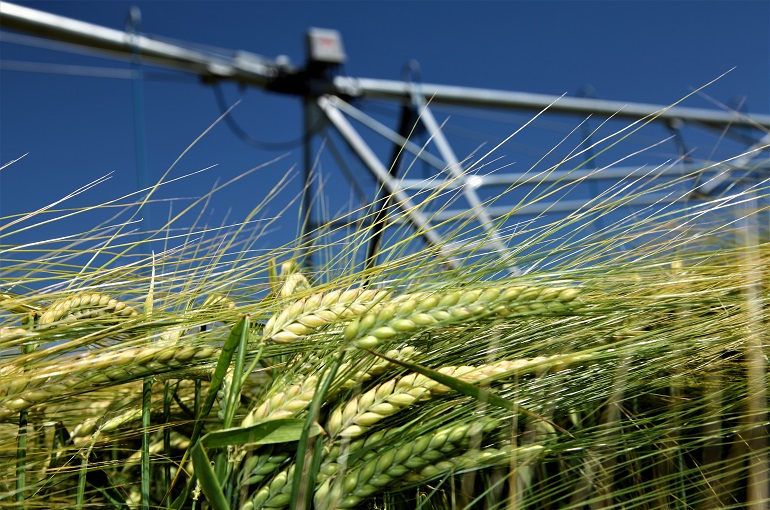Barley Irrigation Requirements and Methods

This post is also available in:
This post is also available in:
![]() Español (Spanish)
Español (Spanish) ![]() Français (French)
Français (French) ![]() Deutsch (German)
Deutsch (German) ![]() Nederlands (Dutch)
Nederlands (Dutch) ![]() हिन्दी (Hindi)
हिन्दी (Hindi) ![]() العربية (Arabic)
العربية (Arabic) ![]() Türkçe (Turkish)
Türkçe (Turkish) ![]() 简体中文 (Chinese (Simplified))
简体中文 (Chinese (Simplified)) ![]() Ελληνικά (Greek)
Ελληνικά (Greek) ![]() Português (Portuguese (Brazil))
Português (Portuguese (Brazil)) ![]() polski (Polish)
polski (Polish)
Generally, barley uses moisture more efficiently than other cereals. As a result, it can grow without irrigation in many cases. However, almost 50% of the commercial barley farms in dry areas are irrigated. When a low seeding rate has been selected, probably the plants won’t maintain moisture, as vegetative growth often increases (1).
Water needs in different growth stages of barley
Barley plants need at least 100 mm (4 inches) and, more often, 125 mm (5 inches) of water from germination to reproductive growth stage to produce grain. The needs for water during vegetative growth vary depending on the environmental temperatures. For example, plants need more moisture for transpiration during a warm, dry spring than in a cool one (2).
As a cool-season crop, barley grows best in temperatures around 20 °C or 68 °F . This happens because, at this range, the plant can use more moisture available in the soil for vegetative crop growth than for transpiration.
Cereal crops, such as barley, use approximately 2 to 3 mm/day of water or 0.078 to 0.11 in of water at the tillering stage, while they need a little more (about 3 to 5 mm/day of water or 0.11 to 0.19 in/day) at the stem elongation stage. When the environmental temperature exceeds 25 °C or 77 °F, the plant needs the most moisture (5 mm/day or 0.19 in/day). In one week, barley will use about 20 to 35 mm of water or 0.787 to 1.377 in of water at the stem elongation growth stage, depending on other environmental conditions such as humidity levels, solar radiation, temperature, and wind. During the heading stage of barley, often in early July, water use is increased to 7-8 mm/day or 0.27 to 0.31 in/day (under ideal conditions). Peak water use is crucial for barley plants from mid-June to late July or early August. Significant reductions in yields can take place if, during this period, moisture is not at a desirable level. During the stage of reproductive growth, water needs and use remain high. After the heading stage, barley will keep using 7 to 8 mm/day of water or 0.27 to 0.31 in/day until the stage of flowering and grain filling (under ideal growth conditions). As grains fill, water use declines and decreases sharply as plants reach maturity. Some interesting findings show that under optimum environmental conditions, for each 25 mm (1 inch) of water used, barley will produce from 5 to 7 bushels/acre or 0.34 to 0.47 tonnes/hectare (2).
All the information mentioned above is just some general guidelines that should not be followed without doing your research. There are no two identical fields in the world; thus, nobody can advise you on fertilization methods without considering your soil’s test data, tissue analysis, and field history.
References
- https://mccc.msu.edu/wp–content/uploads/2016/09/ManagingCoverCropsProfitably_Barley.pdf
- https://open.alberta.ca/dataset/9a017865-5692-464d-92ac-93b5d50558db/resource/c0d20e0c-9f14-4f6d-8144-b8a6bc3452ba/download/5485851-2011-agri–facts–crop–water–use–requirements–revised-100-561-1-2011-11.pdf
Barley History, Plant Information, and Nutritional Value
Principles for selecting the best Barley Variety
Barley Soil preparation, Soil requirements, and Seeding requirements
Barley Irrigation Requirements and Methods
Barley Fertilization Requirements and Methods








































































